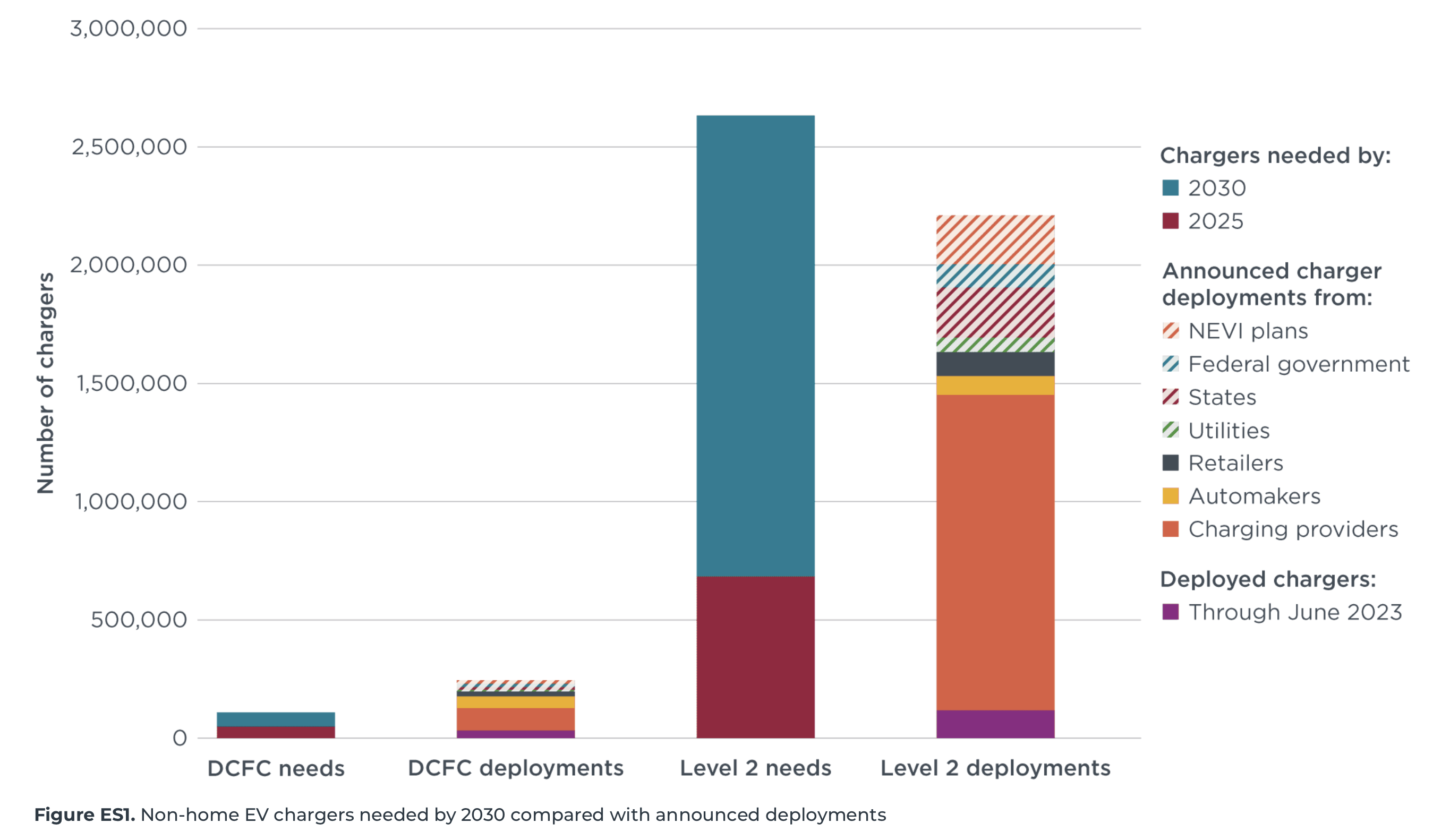U.S. Set to meet EV Charging demands by 2032

The study projects a significant growth in the BEV market, anticipating 55 million BEVs on U.S. roads by 2032. To support this expansive fleet, a comprehensive need for charging infrastructure is outlined, including roughly 3.7 million Level 2 chargers at workplaces and public locations, 136,000 public DC fast chargers, and a vast network of 40.1 million chargers at single-family and multifamily residences.
A critical insight from the report is the need for a substantial increase in public and workplace chargers, necessitating a compounded annual growth rate of about 27% from 2024. This rate is notably lower than the 40% annual expansion seen between 2017 and 2022, suggesting a robust yet achievable target for infrastructure growth.
Adding to the optimism, the report details various announcements by private and public stakeholders about plans to deploy a significant number of chargers by 2030. Analyzing these plans, the report highlights the deployment of 164,000 new DC fast chargers and 1.5 million new Level 2 chargers at public locations and workplaces by the decade’s end. While 20% of these plans provide explicit details on the types of chargers, the rest offer valuable insights into the investment amounts and overall numbers of chargers to be deployed, without specific breakdowns by charger type.
The analysis reveals that the planned charging infrastructure deployments are set to cover about 182% of the required public DC fast chargers and 62% of the needed public and workplace Level 2 chargers by 2030. This deployment translates to approximately 39.2 GW of electrical capacity, meeting 96% of the non-home BEV charging capacity required.
Furthermore, with additional potential deployments from the federal government, states, and utilities, the infrastructure could grow to more than 244,000 DC fast chargers and 2.2 million Level 2 chargers. This would not only meet but exceed the requirements, providing about 47.2 GW of electrical capacity or 115% of the non-home BEV charging capacity needed by 2030.
The ICCT’s comprehensive study provides a clear and optimistic picture of the United States’ readiness to support the accelerated adoption of BEVs through a well-planned and potentially sufficient charging infrastructure. Highlighting the importance of continued commitment and deployment by stakeholders, the study underscores the proactive approach towards addressing the charging needs of the future. As the U.S. advances towards a cleaner, more sustainable transportation future, the planned charging infrastructure deployment stands as a cornerstone in achieving these ambitious environmental goals.
Source: The ICCT



